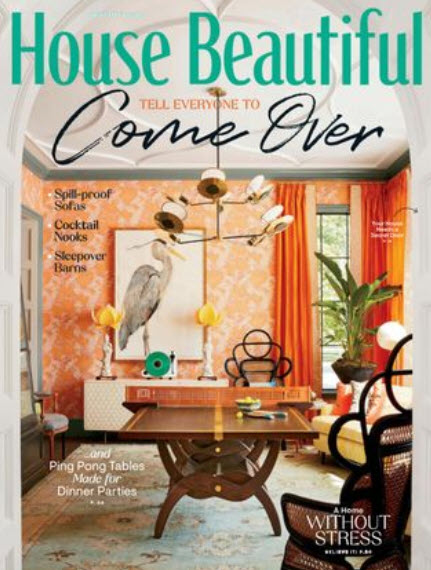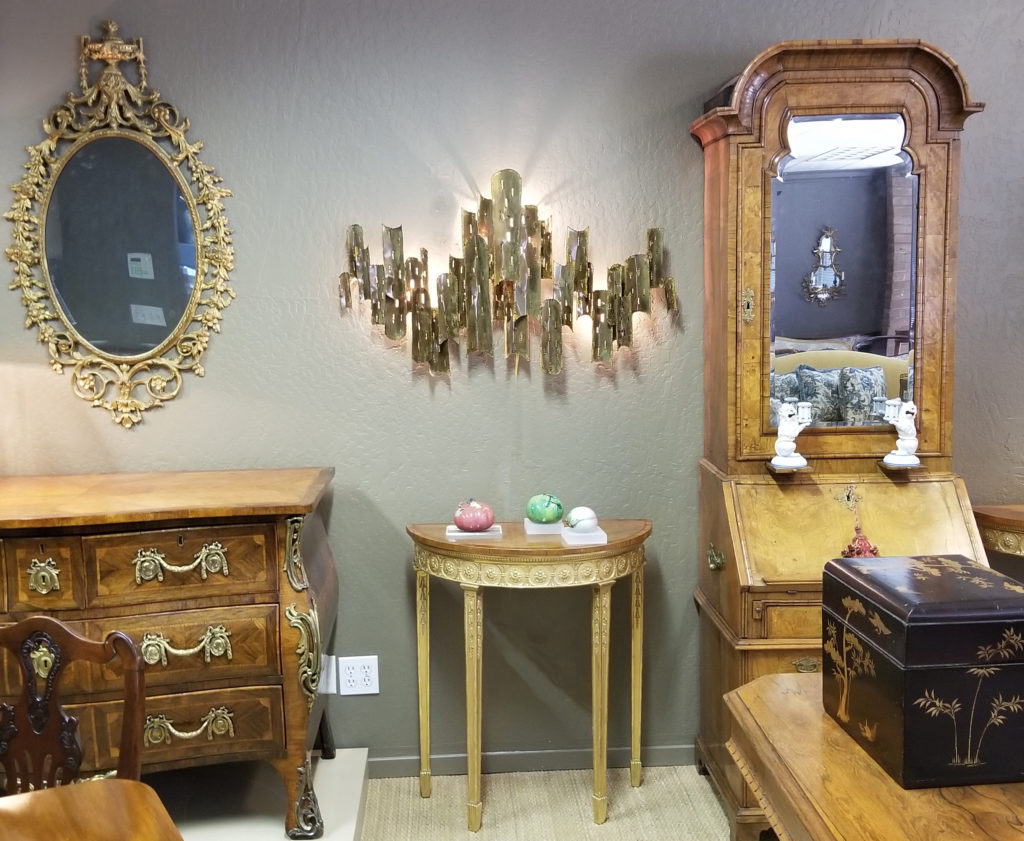One of my gentle readers forwarded something he’d read in the online edition of House Beautiful entitled ‘Please Stop Saying Millennials Killed Antiques’ penned by a millennial, one Hadley Keller. Just reading the title, all I can say is good on her. She touches on themes about which I’ve railed for years, one of which is that the use- or should I say ‘reuse’- of period furniture is about as green as anything a body can do, and a way, as I think about it, to ameliorate one’s carbon footprint when one receives so much of one’s basic necessities delivered to the door in a fibreboard box, its materials wrenched from a denuded forest and that will shortly find its way to an overburdened, methane emitting landfill.
Miss Keller also hints at how one can achieve an updating of period furnishings by the use of a contemporary fabric, implying that antiques as found have a fustiness that millennials might find not precisely distasteful, but yet not, pardon me for saying this, cool. I have to say, I have never in my life thought about anything as ‘cool’, nor ever yet described anything as such. You’re read it here first. Still, the trade in traditional art and antiques hasn’t typically done itself any favors by massing brown furniture in dark shops that seem some kind of throwback to an age of high Victoriana. I recall what one old time dealer had told me, of how happy he was to look across his shop floor, and saw all this shiny wood, and all of it brown.
With all that, for those of us in the trade, we do all of us maintain certain specialisms. We have to, frankly, as so much of our clientele comes to us shopping for items in which they know we are expert. If we maintain a disparate array of types of gear and of different periods we limit our ability to reach both collectors and designers. It must be borne in mind that, as dealers, what we sell is an adjunct to the inspiration of our clients and not always its source. For myself, what I offer is primarily 18th century English furniture, to which, I say modestly, I attempt to bring a certain degree of connoisseurship that the client can then deploy in an interior space that appeals to their own aesthetic.
As I’ve written this, I realize that we’ve often consulted about that aesthetic and have from time to time moderated the views of particularly our millennial visitors. That is to say, we try to tell our shoppers that while we are a repository of traditional material, the notion that any interior should be replete with period material is specious. ‘Period style’ often has less to do with historic precedent than the imaginings of influential designers like John Fowler, Sister Parrish, and Mario Buatta.
But as I’ve read Miss Keller’s article, what’s apparent is she has something very definitely in common with the likes of Mario Buatta, even if she and her running buddies perhaps do not share his aesthetic. They are all of them New Yorkers and one would be yet spot on to say that New York is a style center, and part of that perennial triangle of art and design that includes London and Paris. And while it might be considered a hothouse, or as modern tech parlance has it an incubator, for the localized development, invention, and deployment of taste and trends, one might hope that, more broadly, Hadley’s on to something. Although she cites those who say that they buy online as live auctions and dealer premises are intimidating, I’d say that that would constitute a toe in the water, precedent, one hopes, to taking the collecting plunge


